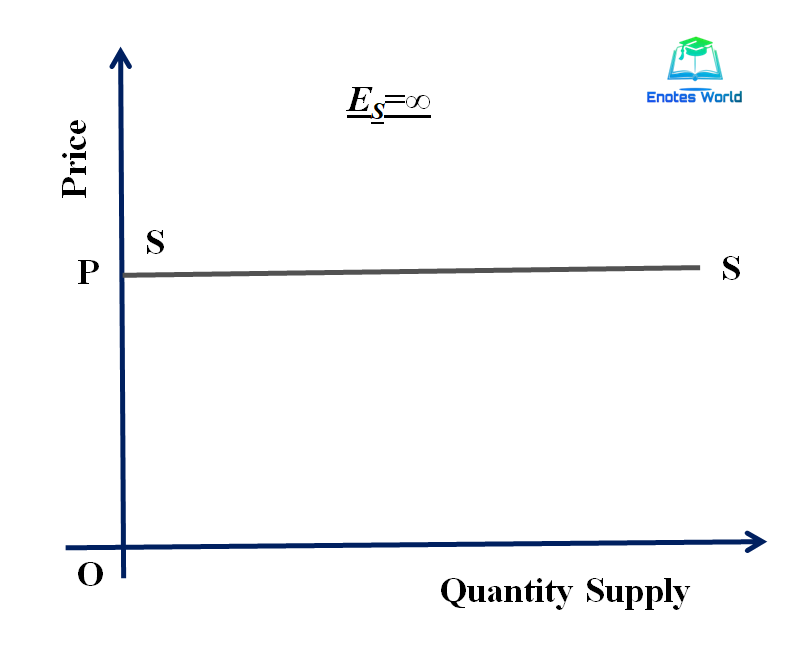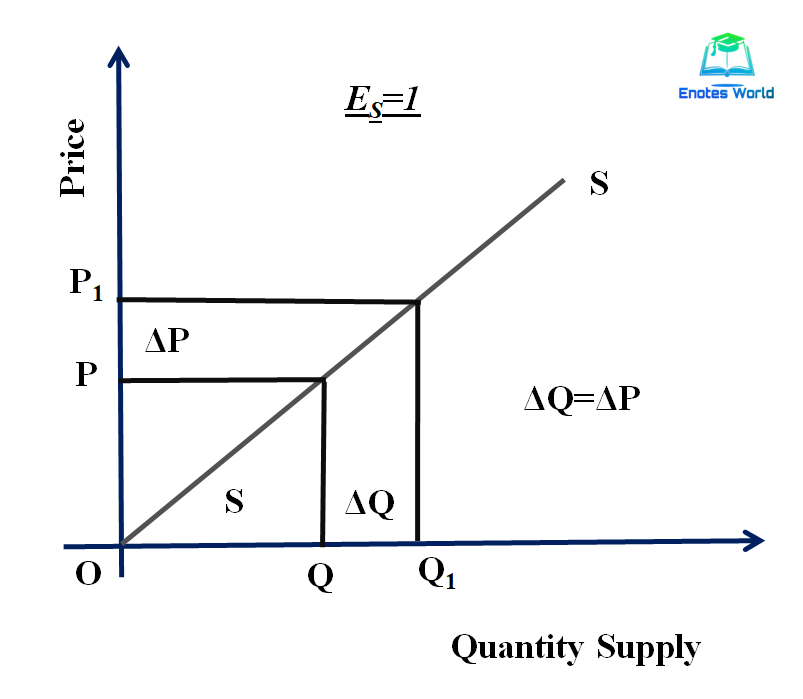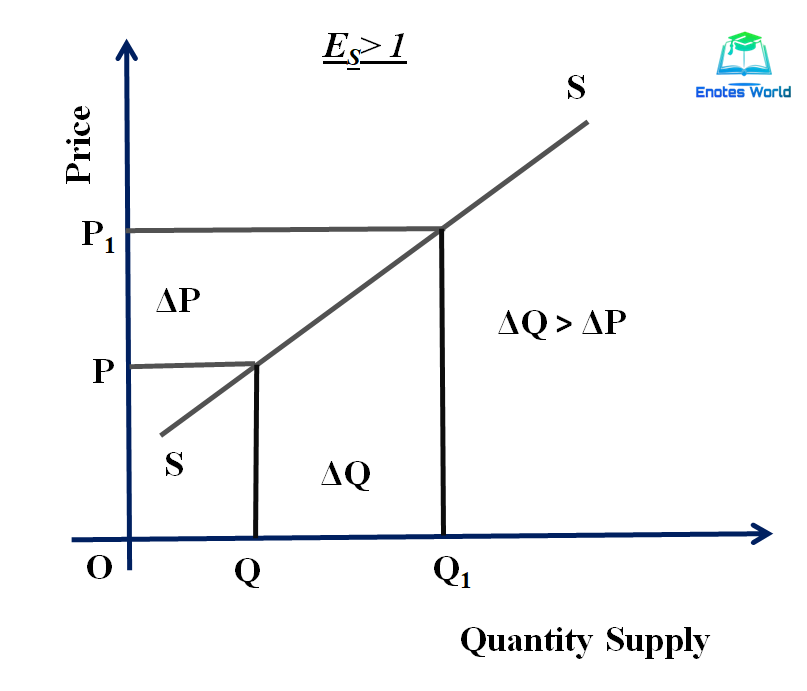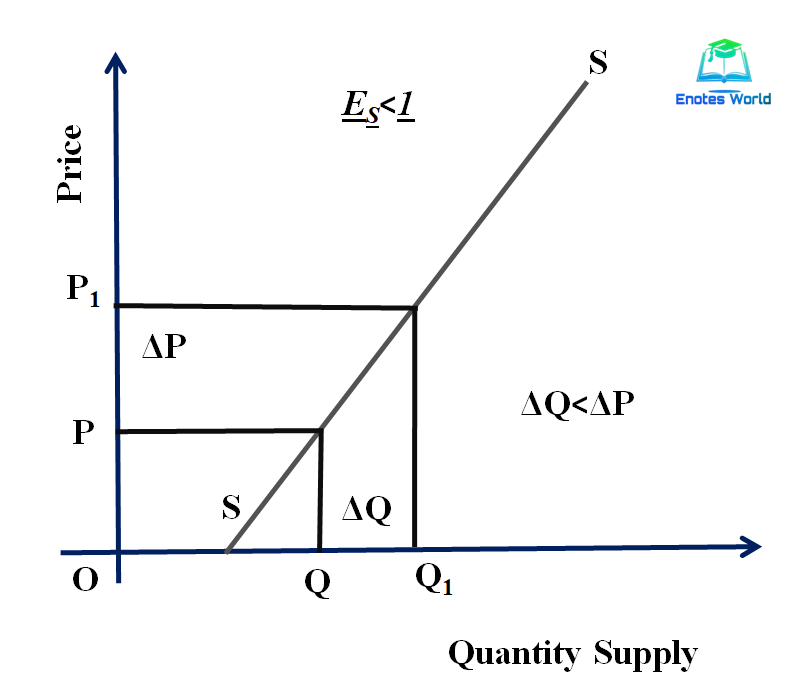Meaning of Price Elasticity of Supply
The Law of supply tells the direction in which the supply of a product will change as a result of the change in the price, but it does not give us the magnitude of change in supply. Price elasticity of supply gives us this information concerning the magnitude of change in the supply of a product in response to a change in its price. Here we will discuss the concept and degree of price elasticity of supply just like the concept and degree of price elasticity of demand.
Price elasticity of supply quantifies the extent of sensitivity of the quantity supplied of a commodity to a change in its price. It measures the reaction of the quantity supplied to a change in price. Therefore, it can be defined as the proportionate change in the quantity supplied of a commodity divided by a given proportionate change in its price. The following formula is used to measure the price elasticity of supply.
ES= Proportionate Change in Quantity Supplied/ Proportionate Change in Price
Where ES stands for price elasticity of supply
The concept of supply elasticity shows the relationship between or ratio between percentage changes, and not between absolute numbers. As the price elasticity of demand, supply elasticity is independent of the measurement units like kg, Rs. Etc. The coefficient of price elasticity of supply is always a positive number as it depicts the relationship between quantity supplied and the price of the commodity.
Degrees or Types of Price Elasticity of Supply
The price elasticity of supply has popularly divided into the following five types or degrees.
Perfectly Elastic Supply (ES=∞)
When a very small or negligible change in the price of a commodity can bring a change in quantity supply of a commodity by an infinite amount, it is a case of perfectly elastic supply. It is also known as the infinite price elasticity of supply. When any amount will be supplied at the going price, but nothing will be supplied at a lower price, it is known as a perfectly elastic supply. The following graph shows the perfectly elastic supply curve.

The above figure shows the perfectly elastic supply curve. SS is the horizontal straight line and is parallel to the quantity axis. This supply curve indicates that a very small change (than cannot be shown in the diagram) in the price of the product brings an infinite change in quantity supply. This is an imaginary situation and not found in real life.
Perfectly Inelastic Supply (ES=0)
If the quantity supply of a commodity remains the same as the changes in price then it is the case of perfectly inelastic supply. It means quantity supply is entirely irresponsive to the change in prices in the case of perfectly inelastic supply. The following figure shows the perfectly inelastic supply curve of a commodity.

In the above figure, the SS vertical line is a perfectly inelastic supply curve. It indicates that the quantity supply will not change at any level of price in the market. Supply is thus totally unchanged to any change in the prices. As a rise or fall in the price of a product in the market, it does not bring any change in its quantity supply in the market. In the case of old paintings, stone, coins this case may be applied. For example, there is only one Mona Lisa Painting. A higher price cannot bring more printings of it. The price elasticity of supply is zero in the case of perfectly inelastic supply.
Unitary Elastic Supply (ES=1)
It refers to a situation in which the percentage change in the quantity supply of a commodity equals the percentage change in the price of the product in the market. In the case of unitary elastic supply, the numerical value of elasticity of supply is one. This type of elasticity of supply is not found in real life. The following figure shows the unitary elastic supply curve.

In the above figure, SS is a unitary elastic supply curve showing an equal percentage change in price as well as quantity supply. Here the percentage change in price and quantity supplied is the same. So the coefficient of price elasticity of supply is one in this case.
Relatively Elastic Supply (ES> 1)
It is the case in which the supply is more responsive to price changes. A small percentage change in the price of the product brings a larger percentage change in quantity supply in chase of elastic supply. Regardless of the shape of the supply curve, it will be flatter in the case of elastic supply. The numerical value of price elasticity of supply is greater than one. The following figure shows the elastic supply curve.

In the above figure, SS is the elastic supply curve. This curve is the flatter showing percentage change in quantity supply is higher than the percentage change in the price of the commodity. Any straight-line supply curve that intersects Y-axis has an elastic supply. It may be the case of mass manufacturing and durable goods, luxurious goods like cars when the business is operating at optimal capacity. If goods are possible to produce on large scale and they can be stored for a longer time then a small rise in price can bring a larger increase in supply. If the car factory is operating at a larger capacity (say 70-80%) then it can easily boost its supply into the market even at a lower percentage increase in price.
Relatively Inelastic Supply (ES< 1)
Supply is inelastic when the proportionate change in quantity supply is lower than the proportionate change in the price of the product. In this case, the quantity supply is relatively less responsive or unresponsive to change in prices. The supply curve is relatively steeper and the numerical value is always less than one. The following figure shows the relatively inelastic supply curve.

In the above figure, the SS upward sloping curve is the inelastic supply curve. It shows that any change in the price of the product brings a change in quantity supply by a lesser percentage. The percentage change in price is higher than the percentage change in supply quantity. Thus, the numerical value of this type of elasticity of supply is less than one. Any straight-line supply curve that cuts the X-axis has an inelastic supply. This may be applied in the case of necessities of life like gasoline, water supply, food, housing, etc. as a change in their price does not result in drastic changes in consumer’s demand, and the same is applied in the case of supply too.
Conclusion
The law of supply explains that every increase in the price increases the quantity supply and vice-versa, other things remaining the same. It only explains that the quantity supplied of a product varies directly with the change in its price but this law cannot explain the magnitude of such change. To explain the direction with the magnitude of change in supply with a change in price, the concept and degree of price elasticity of supply are used. Thus, price elasticity of supply is a numerical measure of the sensitivity of supply to a change in the price of the product, other things remaining the same. There are different degrees of price elasticity of supply as we explained above.
its help me a lot to understand